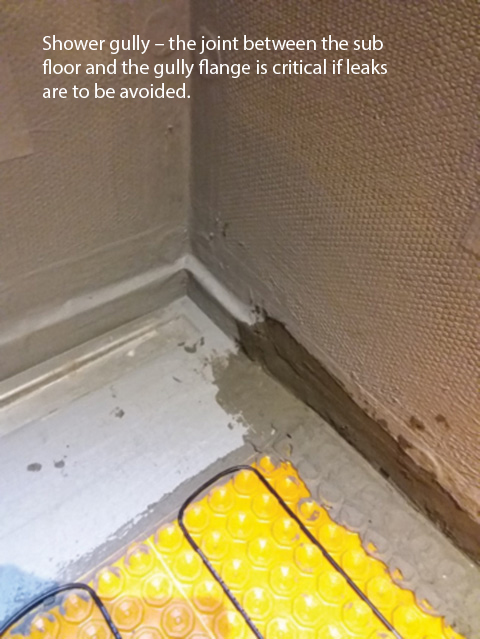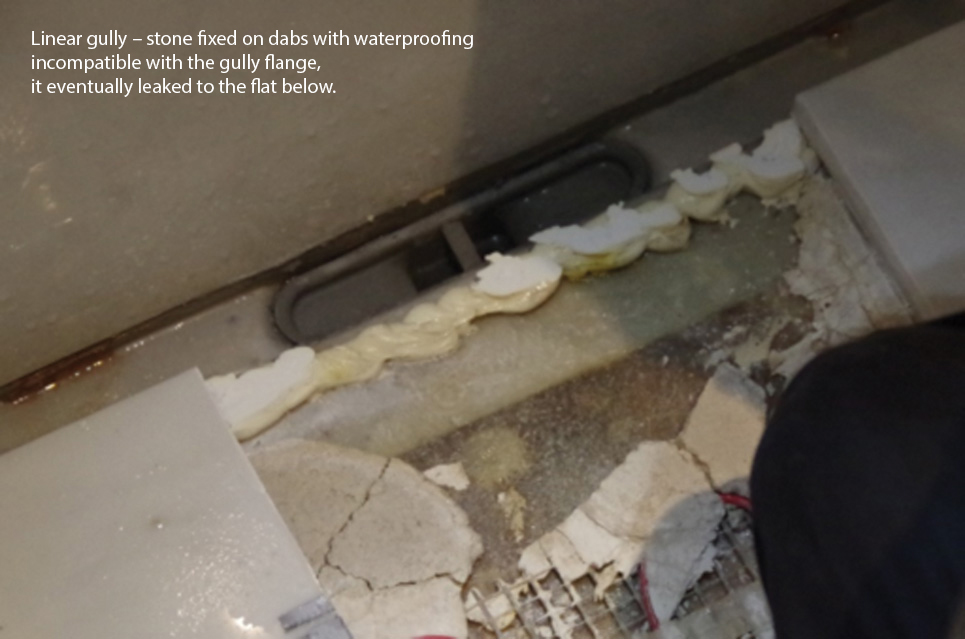The Merry Month : Mesh on stone
One of my biggest concerns over the past year has been the rising number of installation failures in bathrooms. The main culprits – mesh backed stone and failed waterproofing.
There is still a lack of understanding about reinforcement mesh. Should it come off or should it stay on? How much of the mesh needs to be removed? Is it different for floors and walls, wet rooms and dry applications?
The current standards are clear. Floors in any application require 75% of the mesh to be removed. Walls the same, unless the wall slabs are fitted with restraint fixings. The reason is that the adhesive needs to bond with the stone. Simply put, the mesh gets in the way.
Ah yes, you say, but the mesh is stuck to the back of the stone. It will never come off? In my experience, if you leave the mesh-backed stone soaking in water, the stone expands and the mesh can come off more easily. If you think about it, this could happen in a shower after installation.
 No slab supplier I know will offer a written guarantee for the resin glue used to adhere the mesh to the stone.
No slab supplier I know will offer a written guarantee for the resin glue used to adhere the mesh to the stone.
We’ve all read the story of the developer, the builder and the building that looks like a spire (the Shard) and the failed bathroom tiling, haven’t we? They fell down – the tiles, that is; not the Shard.
Another concern is the failure of the adhesion between the now popular linear shower gullies and the stone. The waterproofing used to seal over the joint between the sub floor and the gully flange is critical if leaks are to be avoided.
Most gully manufacturer’s will recommend a waterproofing system or methodology. Ignore this and warranties can be null and void.
I worked on a contract recently where the specification had not addressed this joint. The manufacturer of materials specified for the floor build-up in the shower wouldn’t provide a warranty for the joint between its floor and the gulley. The gulley manufacturer refused to warranty anything unless its system was used. The stone installer rightly asked the builder for an instruction and the builder turned to the design team who tried to persuade someone… anyone, to offer a warranty rather than change their specification.
Stalemate. Until the builder, assisted by the stone installer, found a compatible product, whose manufacturer warranted the application. Then came the laborious task of recording and evidencing the application to satisfy the warranty in 300 showers. Big contract. Big headache.
With increasing numbers of stone companies taking on the responsibility of waterproofing bathrooms, it is important that instructions are followed, materials are compatible and manufacturers warranties are not compromised.
If you are unsure or unclear I’d be happy to cast an eye over the specification for you and ask the right questions.
I carry out a lot of inspections of work in progress, provide written reports and can quality-manage a successful path through the build process, if that helps?

